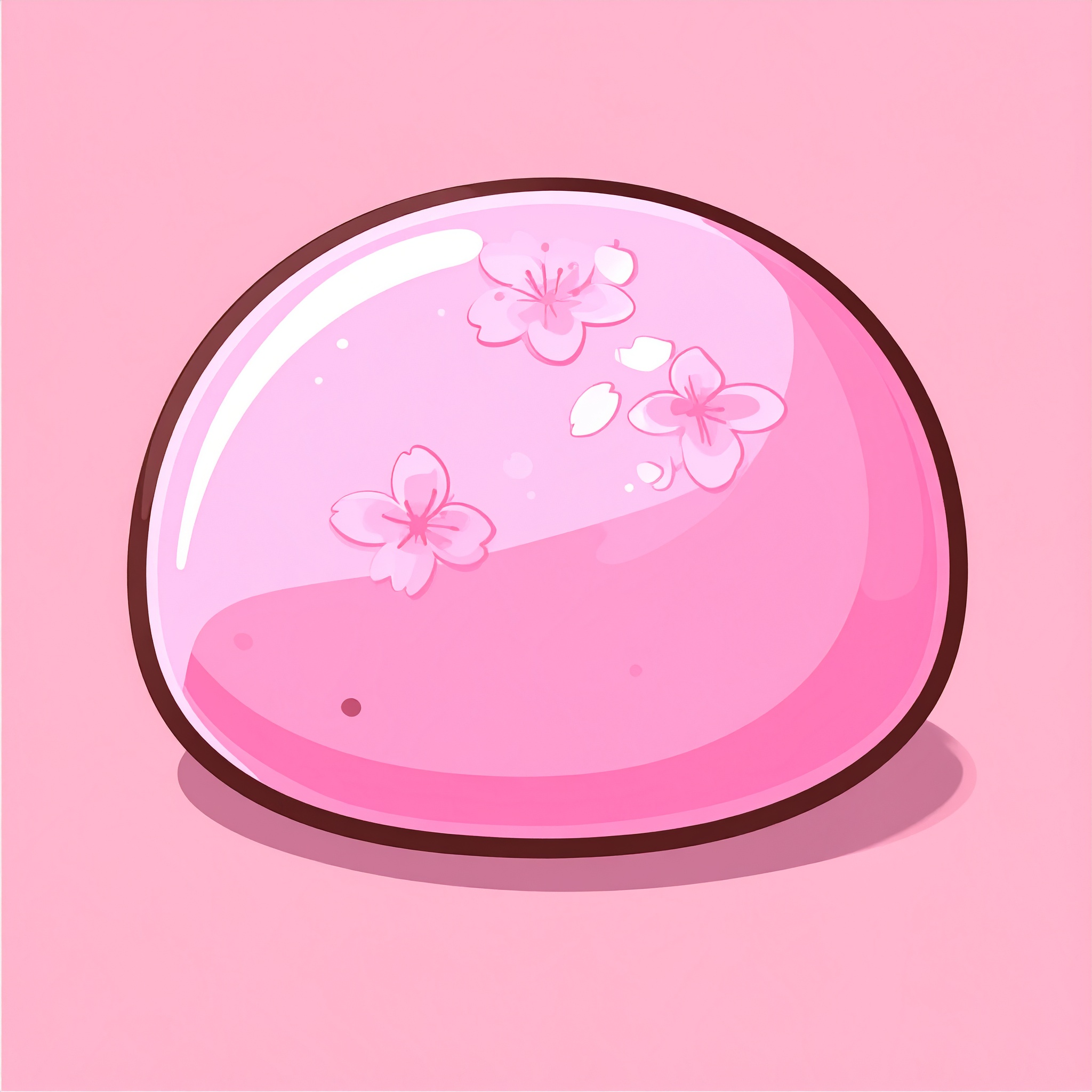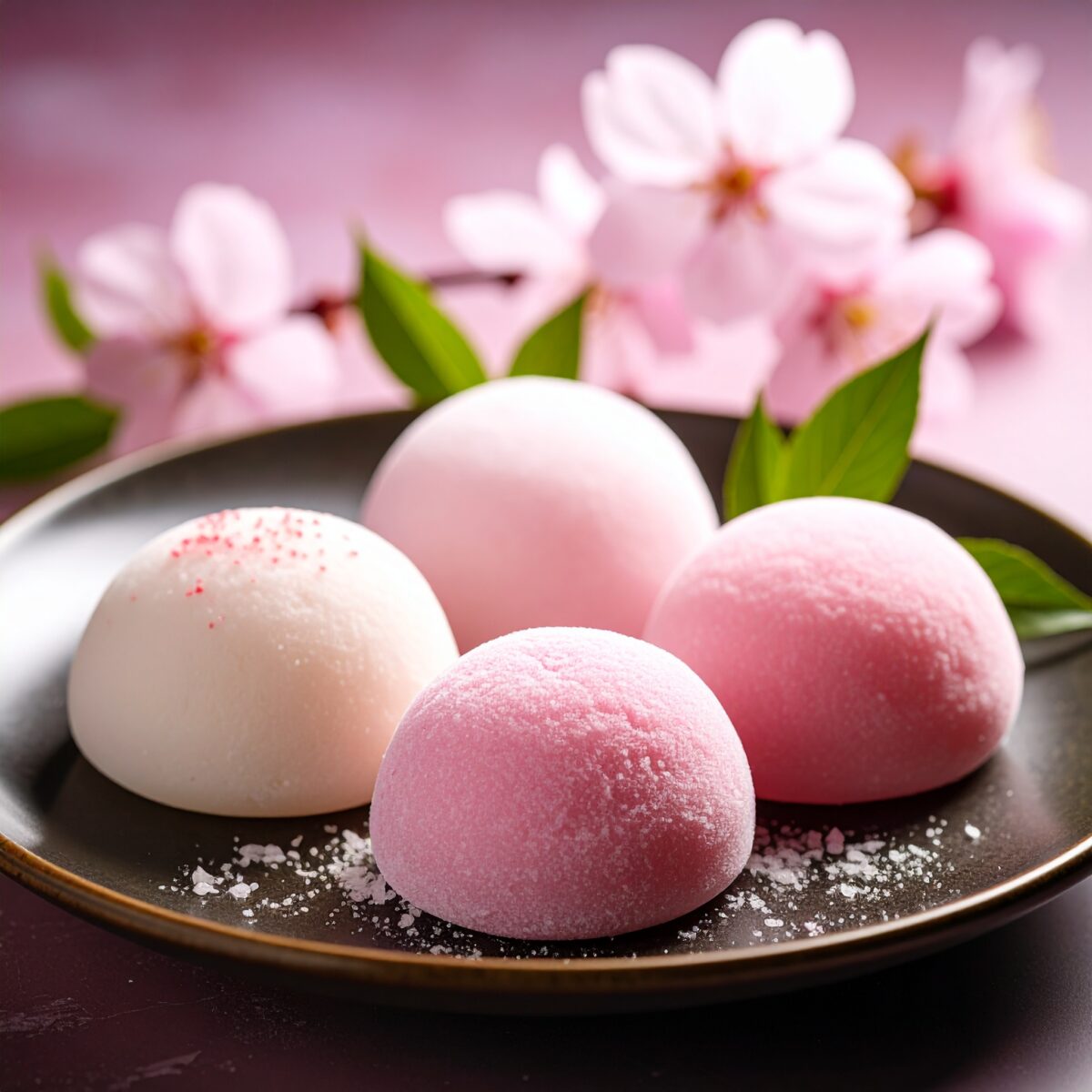As spring quietly draws near, soft pink confections begin to grace the windows of traditional wagashi shops—sakura mochi. With its gently fragrant cherry leaf, pastel-hued exterior, and silky smooth red bean filling, this delicate sweet offers more than taste; it evokes the quiet presence of spring carried on a lingering winter breeze. But why do we crave sakura mochi during this season? And why does its flavor leave such a lasting impression on the heart?
Japan’s deep cultural affinity for the seasons is reflected in every aspect of life—from seasonal attire and annual traditions to poetic symbols and culinary rituals. The dining table, too, becomes a stage for celebrating the shifting seasons. Among these expressions, traditional Japanese confections—or wagashi—have long served as refined emblems of nature’s transitions. Sakura mochi is perhaps the most iconic of spring’s offerings, allowing us to experience the cherry blossom—one of Japan’s most cherished symbols—through sight, taste, and scent.
There are two primary styles of sakura mochi. The Kanto style features a delicate crepe-like layer made from wheat flour, enclosing sweet bean paste and wrapped in a salted cherry leaf. The Kansai style uses domyoji-ko, a coarsely ground steamed glutinous rice, to encase the filling. In both, the gently salted cherry leaf imparts a subtle fragrance that, when paired with the sweetness of the bean paste, creates a harmonious contrast—an exquisite balance that embodies the refined sensibilities of spring in Japan.

Sakura mochi is more than a confection; it is a delicate interplay of sweetness, saltiness, aroma, texture, and visual elegance. Its gentle hues and soft form mirror the tender appearance of early cherry blossoms. Through the simple act of eating, one experiences spring in a deeply personal way—distinct from the communal joy of hanami (flower viewing), yet equally profound.
The cherry blossom holds a singular place in the Japanese heart. Its early bloom brings anticipation, full bloom radiates splendor, and its graceful fall evokes a sense of fleeting beauty. Each phase of the sakura’s life has long been revered in Japanese literature and art, representing the impermanence of time and the essence of life itself. Sakura mochi, in its refined presentation, captures this symbolism—offering a form of floral appreciation through the senses, grounded in everyday life.
Perhaps the most distinctive element of sakura mochi is the salted cherry leaf. Specially prepared to be edible, it imparts a subtle fragrance that defines the entire experience. This scent is attributed to coumarin, a naturally occurring compound known for its calming effects. The interplay of sweet red bean paste with the savory and aromatic leaf evokes the very atmosphere of spring—balanced, ephemeral, and profoundly evocative.
Another reason sakura mochi holds such a special place in the hearts of many is its exclusivity. Much like the cherry blossoms themselves, this confection is available only for a brief window—typically from March through April. Its limited appearance enhances its appeal, imbuing each bite with a sense of fleeting beauty and preciousness that resonates deeply with the Japanese aesthetic of mono no aware.
Traditional Japanese confections also reflect a cultural appreciation for anticipating the seasons. Sakura mochi often appears in shops slightly before the actual bloom of the cherry trees. This subtle gesture offers a way to fulfill the longing for spring in advance—a uniquely Japanese expression of seasonal harmony and emotional attunement through food.

Embedded within the tradition of sakura mochi is the enduring Japanese custom of gift-giving. Offered as a seasonal token to mark the arrival of spring, or presented to celebrate life’s milestones such as graduations and new beginnings, this refined confection becomes a medium for heartfelt expression. Beyond its flavor, it carries messages of warmth and goodwill—subtly conveying, “Spring has come” or “Congratulations,” in a way words alone often cannot.
In today’s world of advanced preservation and global access to ingredients year-round, most foods are no longer bound by the seasons. Yet sakura mochi remains an emblem of springtime—deliberately ephemeral. It endures as a sweet that invites us to experience time.
At its core, food is not merely a means of nourishment. It is a way to enrich the soul, connect with nature, and embrace the rhythm of the seasons. Sakura mochi exemplifies this philosophy. With every bite, it offers a moment of quiet gratitude and reverence.
Much like the cherry blossoms that scatter in a moment’s breeze, sakura mochi is a fleeting presence—its delicate form appearing only briefly each spring. Yet, it is precisely this transience that makes it unforgettable. Year after year, the longing returns with the season, carried not by habit, but by memory.
To partake in sakura mochi during cherry blossom season is far more than a simple indulgence. It is a ritual that aligns one’s heart with the rhythms of nature—a cultural expression of the Japanese reverence for impermanence, aesthetic sensitivity, and the quiet art of cherishing the present moment.




